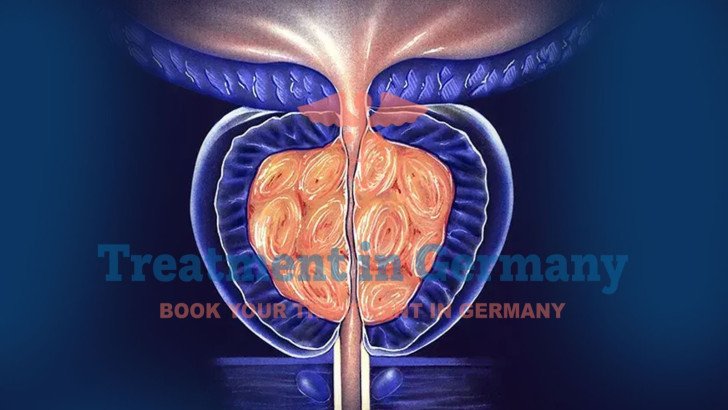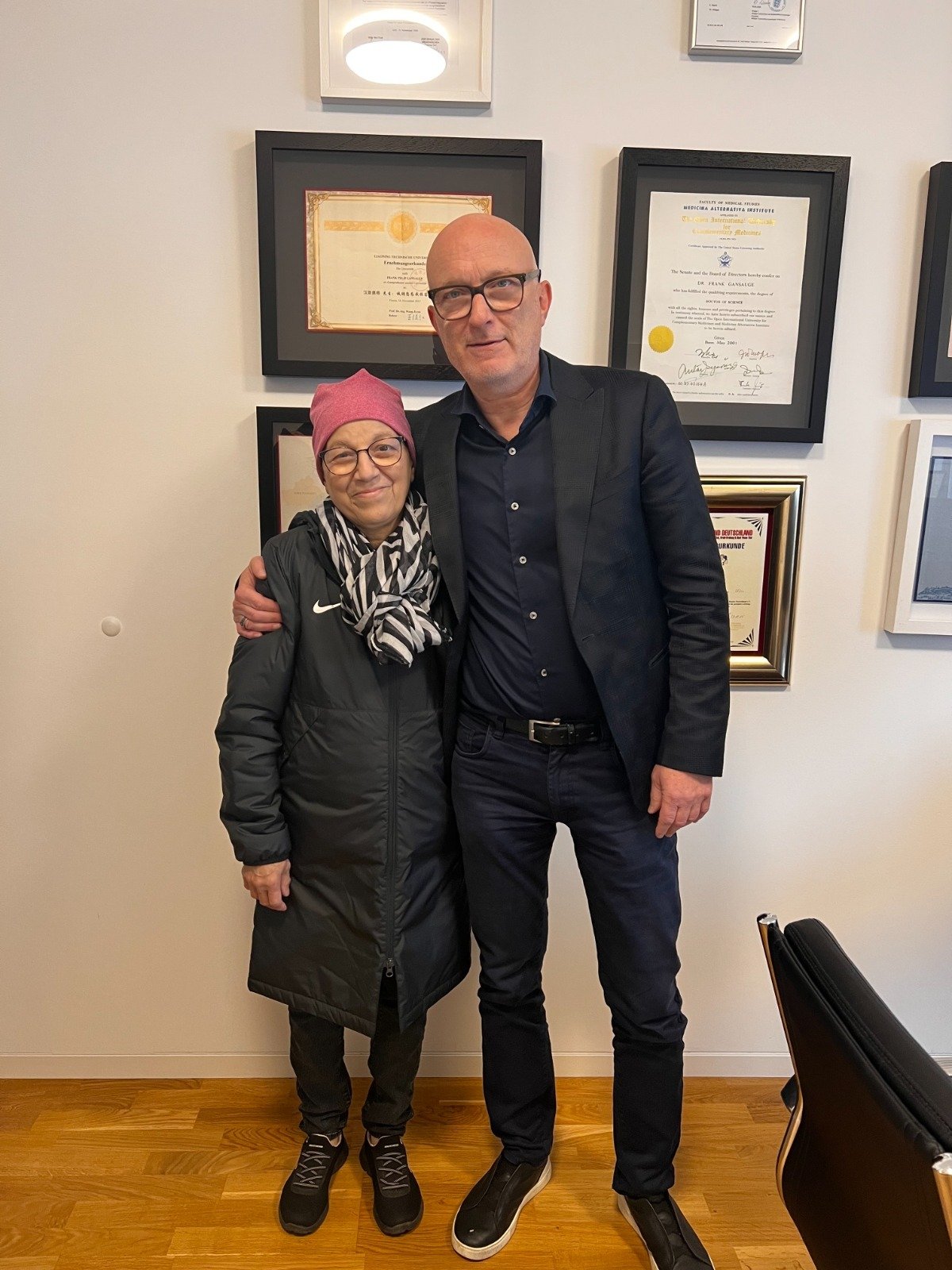
Benign prostatic hyperplasia is one of the most common urological conditions in men, especially aged 50 and older. The number of cases of BPH is rapidly increasing worldwide.
Prostate pathologies, such as benign prostatic hyperplasia (BPH) and, in some cases, early-stage prostate cancer, significantly impact quality of life, particularly in aging men. In Germany, Aquablation, a cutting-edge, minimally invasive procedure, is revolutionizing prostate treatment by offering precise, robotically assisted therapy with reduced side effects. This innovative treatment provides hope for patients seeking effective relief from prostate conditions. Supported by skilled doctors, urologists, and specialists.
Prostate pathologies include BPH, a non-cancerous enlargement of the prostate causing urinary symptoms, and early-stage prostate cancer, which may require targeted interventions. BPH affects over 50% of men over 60, leading to symptoms like frequent urination, weak urine flow, or bladder obstruction. Traditional treatments include medications, transurethral resection of the prostate (TURP), or open surgery, but these carry risks of complications.
Aquablation, a novel therapy using robotically controlled waterjets, precisely removes prostate tissue while preserving surrounding structures. This treatment addresses health factors such as obesity, diabetes, high cholesterol (hyperlipidemia), and autoimmune diseases, improving quality of life after treatment in Germany. Hospitals leverage latest research in prostate treatment to offer Aquablation, often alongside other urological treatments in Germany.
How Aquablation Works for Prostate Pathologies
Aquablation is a minimally invasive procedure performed under anesthesia using the AquaBeam Robotic System. It combines real-time imaging, robotic precision, and high-pressure waterjets to remove excess prostate tissue. The process includes:
German urologists monitor outcomes using symptom scores (e.g., IPSS) and imaging, ensuring minimal complications. Aquablation is often combined with medical therapies or targeted therapies for comprehensive care.
Why Aquablation is Effective for Prostate Pathologies
Aquablation addresses limitations of traditional prostate treatments like TURP or laser therapy, which may cause bleeding, incontinence, or sexual dysfunction. Doctors choose Aquablation for:
Hospitals integrate Aquablation into prostate treatment options, tailoring plans to enhance quality of life after treatment, per latest research in prostate treatment.
Prostate Pathologies Treated with Aquablation
Aquablation is primarily used for BPH but is also explored for select prostate cancer cases. Hospitals apply it to:
German urologists for prostate health value Aquablation for its versatility, making it a cornerstone of prostate therapy.
Benefits of Aquablation for Prostate Pathologies
Aquablation offers significant advantages over traditional treatments:
Side effects, such as temporary urinary urgency or mild bleeding, are minimal and managed by doctors in Germany. Hospitals ensure patient comfort through close monitoring.
Integrating Aquablation with Other Prostate Treatments
Aquablation is often combined with other prostate treatment options for comprehensive care:
This integrated approach, supported by latest research, maximizes success and supports quality of life after treatment.
Complementary Therapies Supporting Prostate Pathologies Treatment
Complementary therapies enhance Aquablation outcomes:
Why Germany Excels in Aquablation for Prostate Pathologies
Germany is a global leader in prostate treatment, offering unique advantages for Aquablation:
Germany’s patient-centered approach makes it ideal for Aquablation.
Conclusion
Aquablation is a transformative treatment for prostate pathologies, offering precise, minimally invasive relief for BPH and investigational benefits for early-stage prostate cancer. Integrated with medical therapies, targeted therapies, and complementary therapies, Aquablation provides tailored prostate treatment options. Delivered by expert German urologists in leading hospitals, this therapy enhances quality of life after treatment.
🌍Why Patients Worldwide Prefer Our Medical Services in Germany – Key Benefits Explained:
FAQs
Which hospitals offer Aquablation for prostate pathologies in Germany?
Many hospitals in Germany and specialized urology clinics provide Aquablation, delivered by experienced specialists. The choice of hospital may depend on specific treatment needs, expertise, and patient preferences.
How much does Aquablation for prostate pathologies cost in Germany?
The cost of prostate treatment in Germany varies depending on the treatment plan, the hospital, and individual needs. It’s recommended to inquire for an estimate based on your specific treatment requirements.
Can Aquablation cure prostate pathologies in Germany?
It effectively relieves BPH symptoms and may support early prostate cancer management, improving quality of life after treatment.
What prostate pathologies are treated with Aquablation in Germany?
Primarily BPH, with investigational use for early-stage prostate cancer and chronic prostatitis, per latest research in prostate treatment.
Why do doctors choose Aquablation for prostate pathologies in Germany?
It’s precise, minimally invasive, and preserves sexual function, complementing other prostate treatment options in Germany.
Are clinical trials available for Aquablation in Germany?
Yes, hospitals in Germany participate in trials to advance Aquablation
How does Aquablation in Germany compare to other countries?
Prostate treatment in Germany is world-class, with German urologists for prostate health using advanced robotic technology.
How effective is Aquablation for prostate pathologies in Germany?
It significantly reduces symptoms (17-point IPSS drop) with low complication rates, per latest research in prostate treatment.
Are doctors in Germany experienced with Aquablation for prostate pathologies?
Doctors, including German urologists for prostate health, are highly skilled in prostate therapy in Germany, ensuring expert care.
What is the waiting time for Aquablation in Germany?
Treatment typically starts within 1-2 weeks
Can I get a cost estimate for Aquablation before traveling?
Yes, hospitals in Germany provide cost estimates based on medical records, type of treatment and individual requirements.
For more information or a free consultation, visit our contact us page.
Kindly complete the form below, and our dedicated team will reach out to you promptly. We look forward to connecting with you soon!
Trierer Straße, 56072 Koblenz, Germany
.webp)
.webp)
 (1).webp)
 (1).webp)

.webp)
.webp)
 (1).webp)
 (1).webp)
